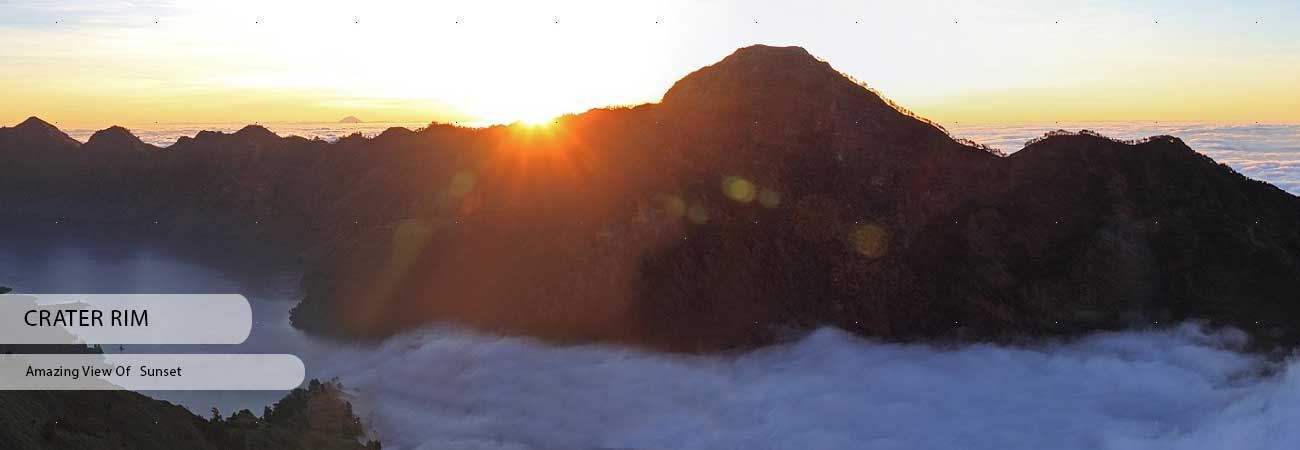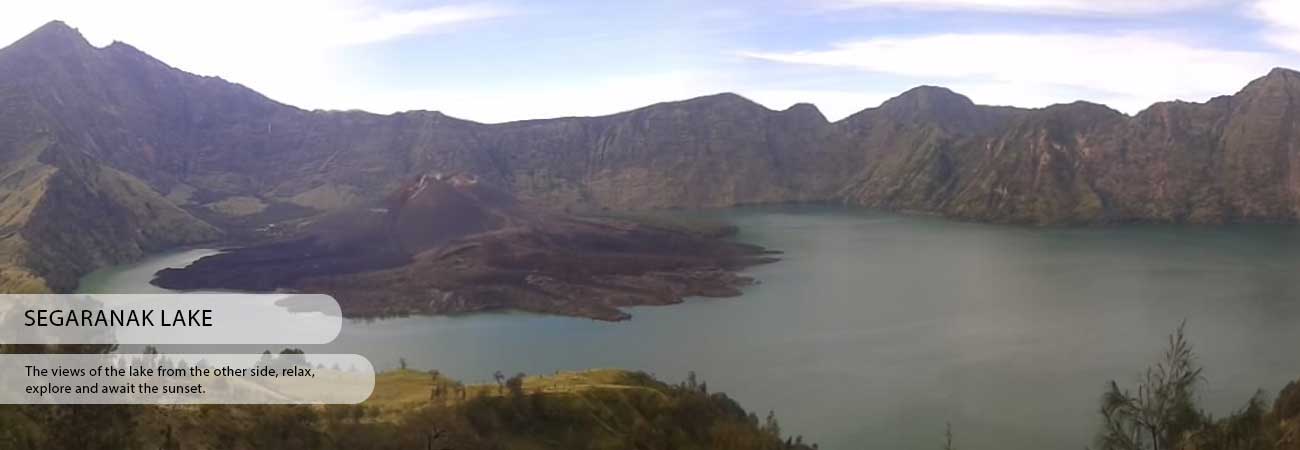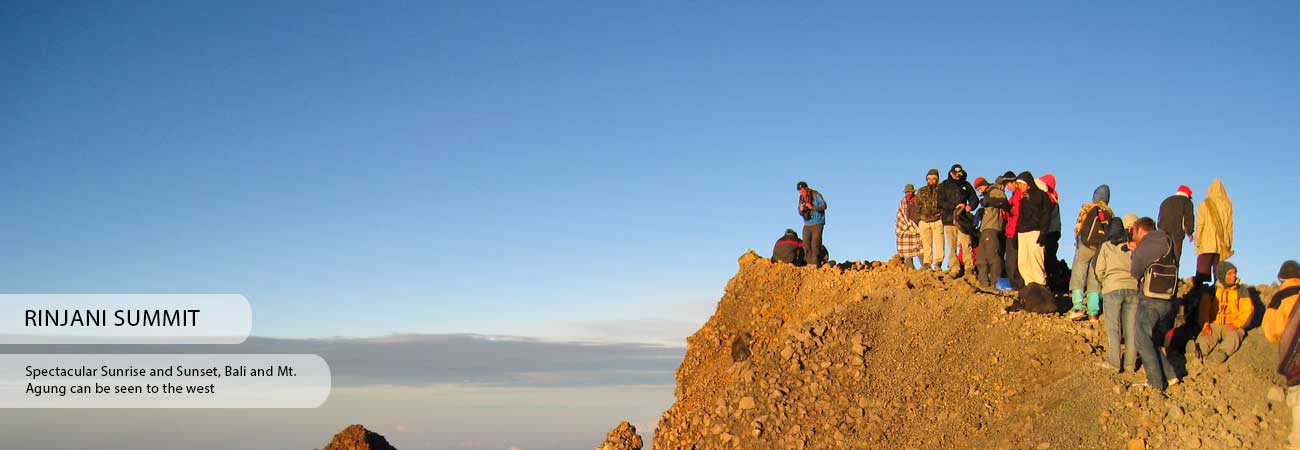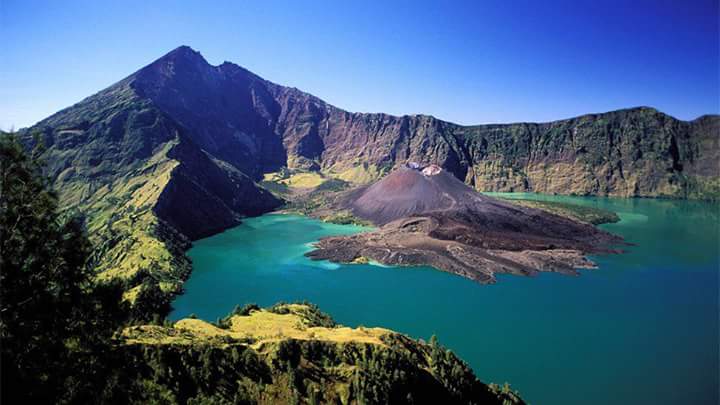Rinjani Informations
Mount Rinjani, second highest mountain in Indonesia, and an active volcano, is valued and protected by many for its spiritual, as well as the many natural qualities that endear it to those who experience its majesty; leading to its worship by thousands of Balinese as well as Sasak pilgrims.
The park covers an area of 41,330 ha on the northern part of Lombok. Named after Indonesia’s second highest volcanic peak outside of West Papua, the peak of Gunung Rinjani (3,726m) dominates the landscape. Within the crater is the spectacular Segara Anak lake and the still-active volcano Gunung Baru (2,363m). It is surrounded by a further 66,000 ha of Protection Forest and covers the four administrative district of West, East, north and Central Lombok. The park ecosystem is in the transitional zone between Asia and Australia (Wallace zone). Average rainfall is about 3,000 mm annually. Gunung Rinjani is rich in a variety of flora, fauna and vegetation types. On the south western side of the mountain is the most eastern extent of primary rainforest in Nusa Tenggara. This gives way to monsoon forest and drier climate in the east, and savannah in the north east. Notable flora includes the everlasting edelweiss flower (Anopheles viscid), tiger orchid (Vanda sp.), alang-alang grass (Imperata cylindrical), cemara trees (Casuarinas trifoliate and Casuarinas occidental).
For the people of Lombok, Sasak, and Balinese alike, the volcano is revered as sacred place and abode of deities, Segar Anak crater is the destination of thousands of pilgrims who place offering in the water and bathe away disease in the hot springs, the endemic duck Belebis is found here and several species of fish are recorded. Mount Rinjani, one of the over 40 national parks throughout Indonesia, was established in 1997.
Over 20 villages surround Rinjani and there are many routes up the mountain, but the main access is from Senaru in the north and Semabalun Lawang to the east. The challenging three-day Rinjani Trek route from Senaru to the crater rim (Pelawangan), down to the stunning crater lake and then on to Sembalun Lawang, is considered one of the best treks in South East Asia.
The village of Senaru and Sembalun is the main gateway to Gunung Rinjani National Park, the most popular start point for the three day Rinjani Trek up Indonesia’s second highest volcanic peak (3,726m). For the people of Lombok, Sasak and Balinese alike, the volcano is revered as a sacred place and the abode of gods. Within the spectacular crater, the Segara Anak Lake is the destination of many pilgrims who place offerings in the water and bathe away disease in the nearby hot springs. Developed with New Zealand Government assistance since 1999, the Rinjani Trek Centre embodies under one roof (satu atap) the unique partnership of the National Park, tourism industry and local communities that has been forged to manage and protect the Rinjani mountain environment.





